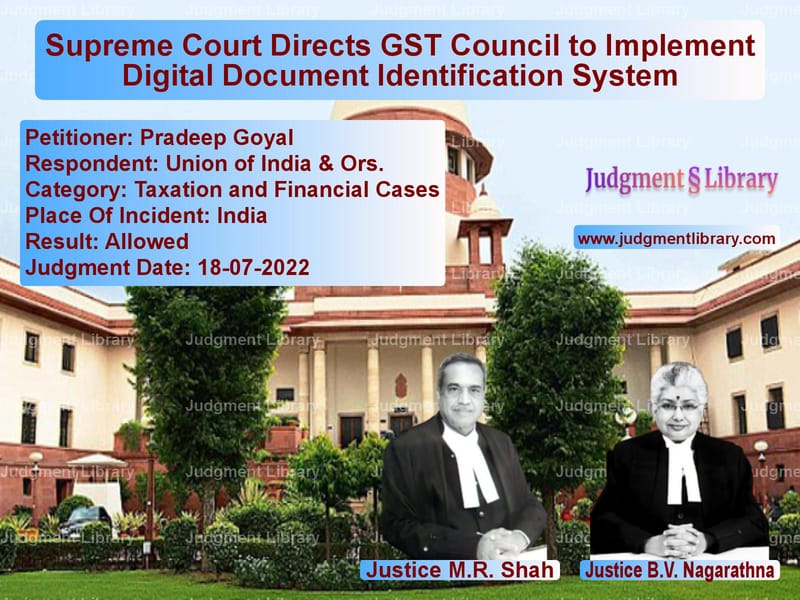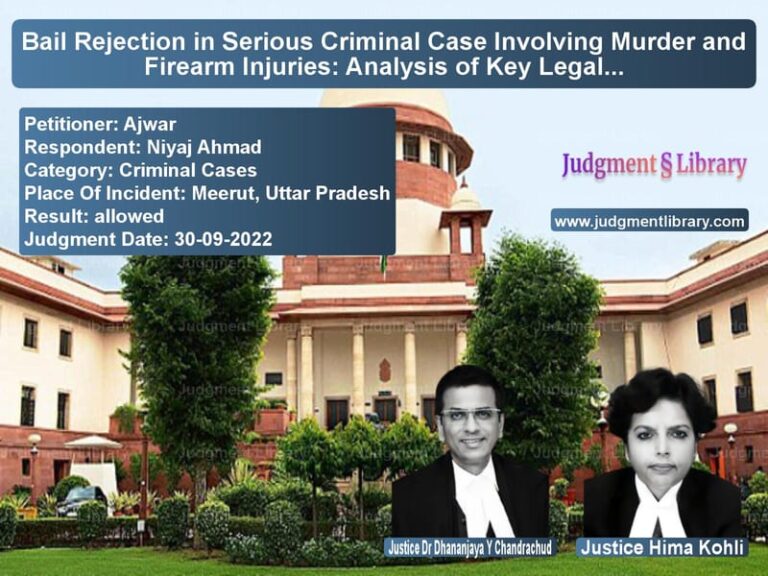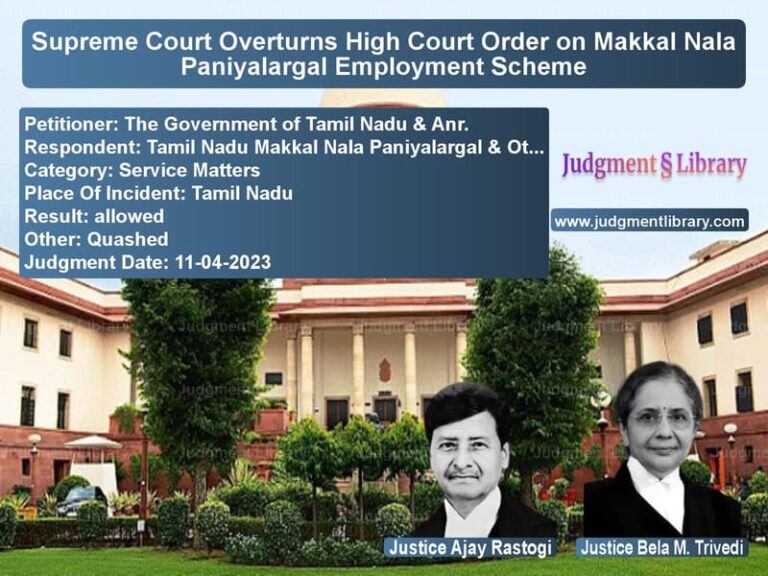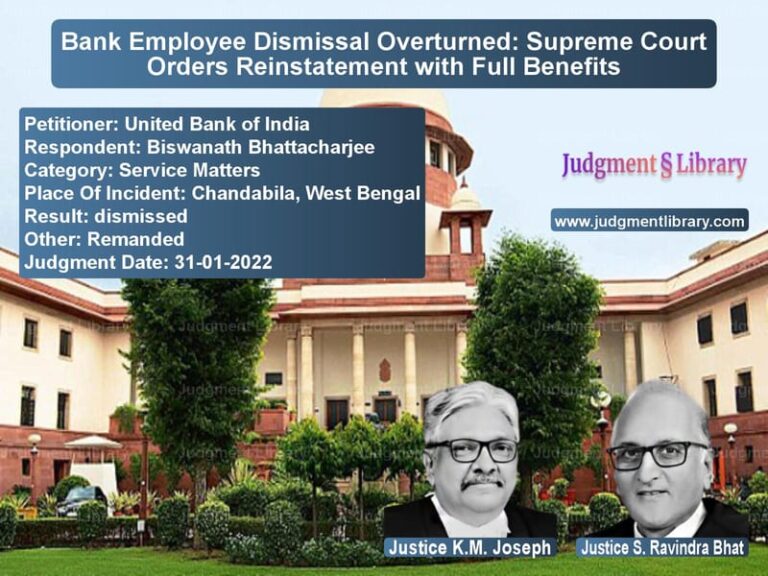Supreme Court Directs GST Council to Implement Digital Document Identification System
The Supreme Court of India, in the case of Pradeep Goyal vs. Union of India & Ors., has directed the GST Council to issue recommendations to all States for implementing a system of electronic (digital) generation of a Document Identification Number (DIN) for all communications sent by State Tax Officers. This ruling emphasizes transparency, accountability, and good governance in indirect tax administration.
This case was a Public Interest Litigation (PIL) filed under Article 32 of the Constitution by a Chartered Accountant, Pradeep Goyal, who sought implementation of the DIN system across all States. The Supreme Court, recognizing the importance of the system, disposed of the writ petition with directions to the GST Council to issue advisory instructions to the States.
Background of the Case
The petitioner, Pradeep Goyal, approached the Supreme Court through a PIL, arguing that the implementation of an electronic DIN system would enhance tax compliance and prevent harassment of taxpayers. The petitioner contended that:
- The Central Government had already introduced DIN for the Central Board of Direct Taxes (CBDT) in 2019.
- Only two States—Karnataka and Kerala—had implemented the DIN system in indirect tax administration.
- The GST Council had the authority under Article 279A of the Constitution to recommend such a system to all States.
- The absence of a DIN system resulted in arbitrary tax demands and lack of accountability among State Tax Officers.
Key Legal Issues
- Should the GST Council be directed to mandate the implementation of DIN for all State Tax Officers?
- Does the absence of a DIN system lead to unfair tax practices?
- Can the Supreme Court direct State governments to adopt digital reforms in tax administration?
Arguments Presented
Petitioner’s (Pradeep Goyal’s) Arguments:
- The absence of a DIN system allowed tax officers to issue notices without records, leading to harassment of taxpayers.
- The system was already successfully implemented at the central level and should be extended to State Tax Departments.
- The GST Council had the constitutional power to recommend uniformity in tax administration under Article 279A.
- Transparency in tax notices and assessments would reduce litigation and improve compliance.
Respondent’s (Union of India) Arguments:
- The government agreed that DIN would enhance transparency and accountability.
- While the Central Government had implemented DIN for the CBDT, States were responsible for indirect tax administration.
- The GST Council could issue advisories, but each State had to implement the system independently.
Supreme Court’s Observations and Ruling
The Supreme Court ruled that:
- DIN would enhance transparency and reduce corruption in tax administration.
- The GST Council was empowered to issue advisories to States regarding tax governance improvements.
- The Court could not issue a mandamus compelling States to implement DIN but could direct the GST Council to make necessary recommendations.
- All States should consider implementing DIN to ensure uniformity and accountability.
The Court observed:
“Implementing the system for electronic (digital) generation of a Document Identification Number (DIN) would be in the larger public interest and enhance good governance. It will bring in transparency and accountability in the indirect tax administration, which are so vital to efficient governance.”
The Supreme Court disposed of the writ petition by directing the Union of India and GST Council to issue advisory recommendations to all States to implement DIN. The Court also instructed the Registry to send copies of the order to all Chief Secretaries of State Governments for compliance.
Key Takeaways from the Judgment
- The GST Council is responsible for recommending digital reforms in tax administration.
- The DIN system ensures transparency in tax notices, reducing malpractices.
- The ruling encourages uniformity in tax governance across all States.
- States are expected to adopt DIN in the interest of fairness and efficiency in tax compliance.
Impact of the Judgment
- The decision pushes State governments to modernize tax administration.
- Taxpayers will have greater protection against arbitrary tax notices.
- The ruling strengthens digital reforms in governance and promotes the use of technology in public administration.
- Future tax-related PILs may seek similar reforms in other areas of tax administration.
Conclusion
The Supreme Court’s ruling in this case marks a significant step toward tax governance reforms in India. By directing the GST Council to issue advisories for DIN implementation, the Court has reinforced the importance of transparency, accountability, and fairness in indirect tax administration. This decision sets a precedent for future reforms in digital tax compliance and ensures that taxpayers are protected from arbitrary actions by tax authorities.
Petitioner Name: Pradeep Goyal.Respondent Name: Union of India & Ors..Judgment By: Justice M.R. Shah, Justice B.V. Nagarathna.Place Of Incident: India.Judgment Date: 18-07-2022.
Don’t miss out on the full details! Download the complete judgment in PDF format below and gain valuable insights instantly!
Download Judgment: pradeep-goyal-vs-union-of-india-&-ors-supreme-court-of-india-judgment-dated-18-07-2022.pdf
Directly Download Judgment: Directly download this Judgment
See all petitions in Tax Refund Disputes
See all petitions in Banking Regulations
See all petitions in Income Tax Disputes
See all petitions in Judgment by Mukeshkumar Rasikbhai Shah
See all petitions in Judgment by B.V. Nagarathna
See all petitions in allowed
See all petitions in supreme court of India judgments July 2022
See all petitions in 2022 judgments
See all posts in Taxation and Financial Cases Category
See all allowed petitions in Taxation and Financial Cases Category
See all Dismissed petitions in Taxation and Financial Cases Category
See all partially allowed petitions in Taxation and Financial Cases Category







